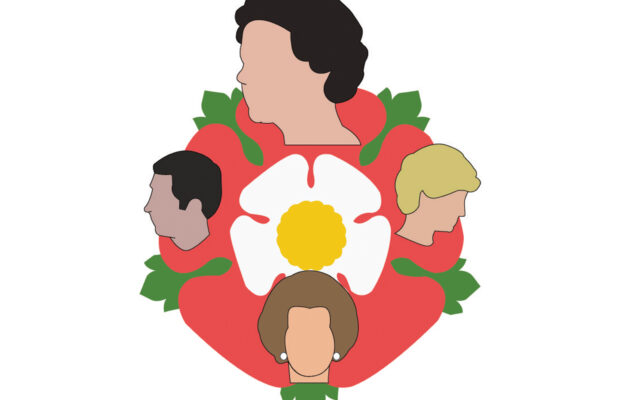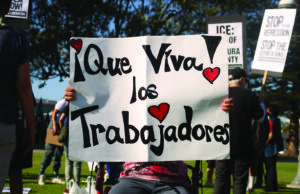“The Crown” season 4 eloquently demonstrates Britain’s class divide

This review does contain mentions of eating disorders.
Season 4 of Netflix’s original “The Crown” unwaveringly tackles the growing class divide in the United KIngdom in the 80s. The season begins immediately following Margaret Thatcher’s electoral victory in 1979, becoming the United Kingdom’s first female prime minister. Her victory is shown through the perspective of Queen Elizabeth II, which immediately sets up the dichotomy between Thatcher and Elizabeth.
One of the first major interactions between Elizabeth and Thatcher takes place at Balmoral Castle in Scotland, where it is customary for the royal family to meet and evaluate new prime ministers and potential spouses to the royal family. The event is filled with formalities that are unique to the nobility of the United Kingdom. The Thatchers, coming from a working class background, are constantly confused and perplexed as to how they are supposed to behave in the presence of the royal family, and Thatcher constantly berates the entire extravaganza as a waste of her time as she longs to return to her work. This conflict between the country’s two leaders is characterized by the class difference between Thatcher and Elizabeth. However, the relationship between Thatcher and Elizabeth in “The Crown” is somewhat antagonistic, as Thatcher’s policies of privatization and austerity caused massive social unrest. In this way the perspective ironically shifts, where Elizabeth is the one challenging Thatcher to stand up for the working class. Although many of the events in “The Crown” are dramatized and creative liberty is certainly used, the key themes delivered by this season are spot on. Thatcher oversaw a period of record unemployment and her government oversaw an increasing gap between the working and upper classes, a fact that is not lost upon the writers of “The Crown.”
Thatcher was not the only iconic British figure introduced in this season, as Diana, Princess of Wales was introduced in this season. Diana begins fitting right in with the royal family at Balmoral Castle, and the relationship begins amicably. With his family’s approval and pressure to marry, Charles asked Diana to marry him, and she accepted. Diana ended up learning of Charles’s continued affair with Camilla through her discovery of a bracelet he had made her, and although he insisted that it was a parting gift, Diana learned in their honeymoon that their affair was far from over. Their relationship troubles are truly seen in their trip to Australia; Charles’ jealousy for the attention Diana received ruined any chances of their marriage being repaired. Diana had developed Bulimia Nervosa at the start of their relationship and her disorder worsens as Charles becomes increasingly antagonistic towards her. Diana becomes an outsider, and yet despite her feelings of isolation, she continues to impress world leaders and members of the British public as she quickly becomes one of the most popular members of the royal family.
Diana continually distinguishes herself from the rest of her royal family through her inclination to display genuine emotion and acts of love and sympathy rather than keep a stony face like the other royals. In hers and Charles’s trip to Australia, she insists on bringing her son, William with her because she loves him and can’t stand to be apart from him. Charles’ and his family’s mocking her of doing so is the perfect depiction of the difference of character in Diana and the rest of the royals: Diana put her children first, while the rest of them put their duty and image first.
Perhaps the quintessential moment of Diana’s compassion takes place at the conclusion of the season, where Diana visits a hospital in New York and embraces a young child with AIDS. At the time, such a move would have been extremely uncommon amongst many people due to the misinformation floating around surrounding AIDS. When she returns to the UK she is met only with hostility from Charles, who enviously views Diana as stealing attention away from him. This moment synthesized the differences between Diana and the rest of the royal family, as Diana is shown to genuinely care about the people of the world and tries to help them out through her charity work, while the royal family is more concerned with their own public image. In this sense Diana is an advocate for members of the middle and working classes, while the royal family clearly stands for their own interests as members of the nobility.
Ultimately, “The Crown” season 4 magnificently reflects on a time of increased divisions of class and soberly portrays these divisions from the perspective of those in power.



